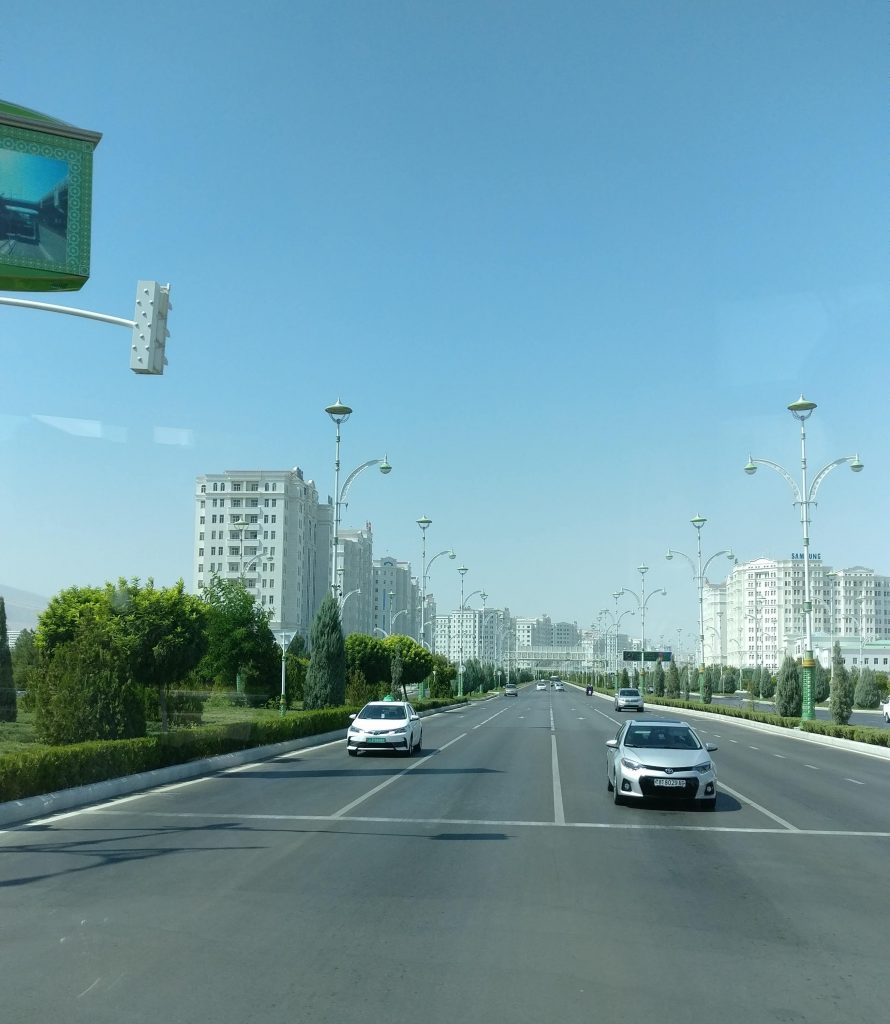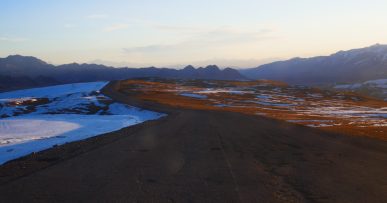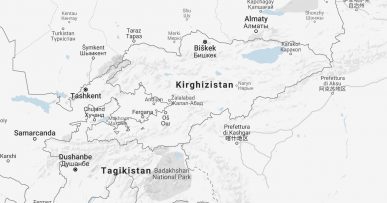Built by Russians at the end of the XIX century, Ashgabat remained for years just a normal settlement along the transcaspian railway. On the 6th of October 1948, the city was partially destroyed by a strong earthquake and I was rebuilt on Soviet style. Today Ashgabat is a fascinating mix between Las Vegas and Pyongyang and the few tourists who visit the city every year will definitely remain impressed by the uniqueness of its buildings.
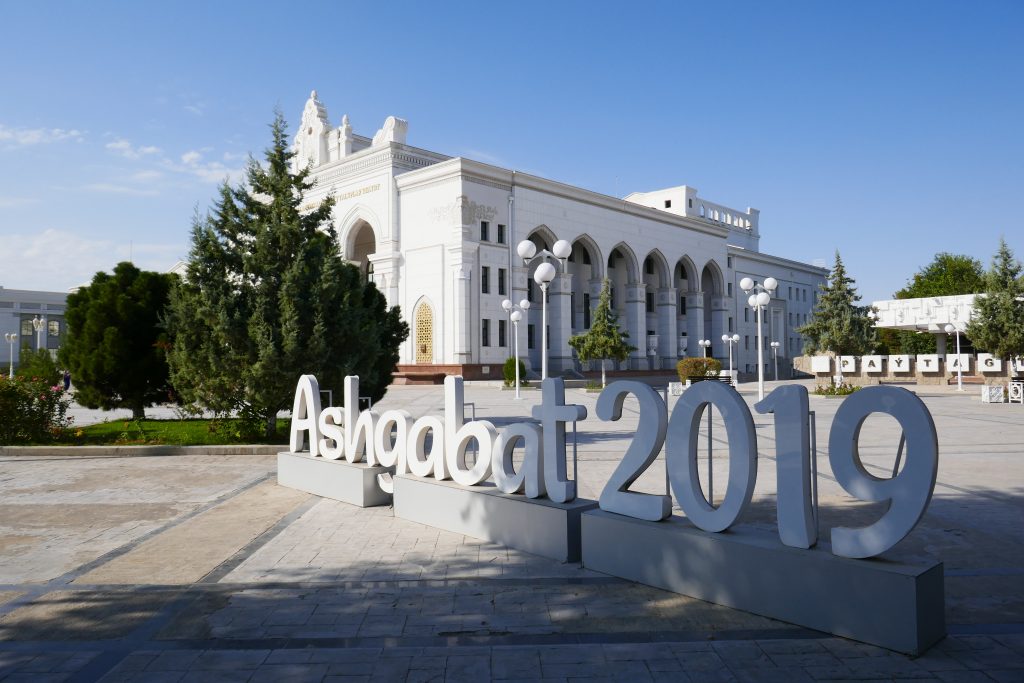
We spent just one day and a half in the white city of Ashgabat, was it enough? Probably not, but with a five days transit visa you cannot stay there much more than that. We arrived from Darvaza crater (have a look at our article about 5 Days in Turkmenistan to know a bit of our “adventure”) and we went straight to our hotel. In Ashgabat there are not many hotels that accepts foreigners and the ones that do, are generally quite expensive. We stayed at Kuwwat hotel, not exactly the most fancy one but it was cheap, clean, central and we had an en-suite. We didn’t need more than that.
We arrived, we left our luggages, we went out immediately. Our first destination was the train station, we wanted to buy the tickets for the following night, so we did. On the way, we were impressed by the white buildings, white cars and by the 8-point stars. Here the three peculiarities of Ashgabat:
- The Turkmenistan government has decided over the years to spend tens billions of dollars glorifying the capital city of Ashgabat with all white marble buildings. So much marble was used here that Ashgabat also got a Guinness world record!
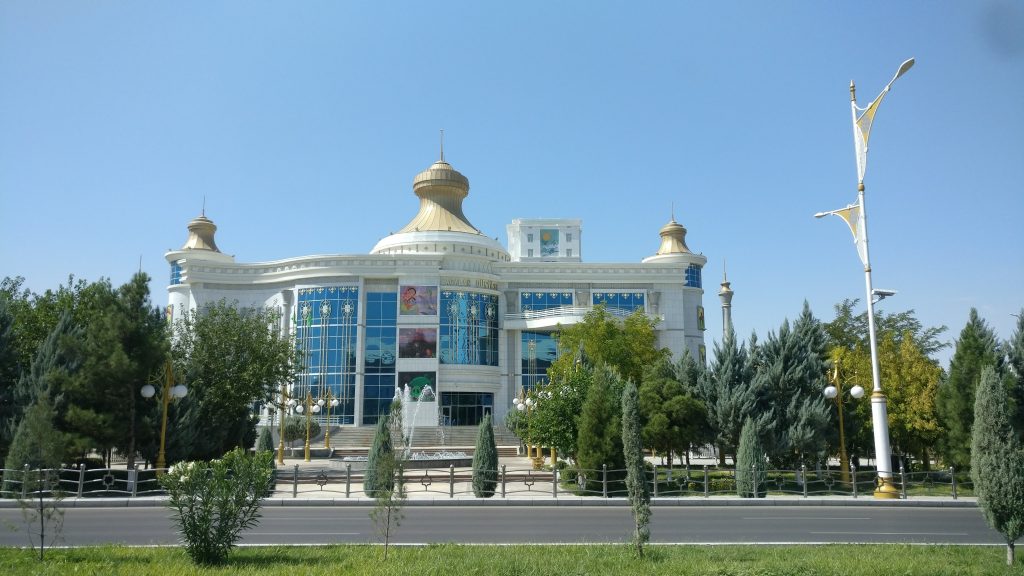
- Since all the buildings are white, shouldn’t we have white cars as well? That’s what they probably thought when they abrogated a law according to which all cars in Ashgabat must be white, silver or gold. The result is a mix between creepy and fantastic.
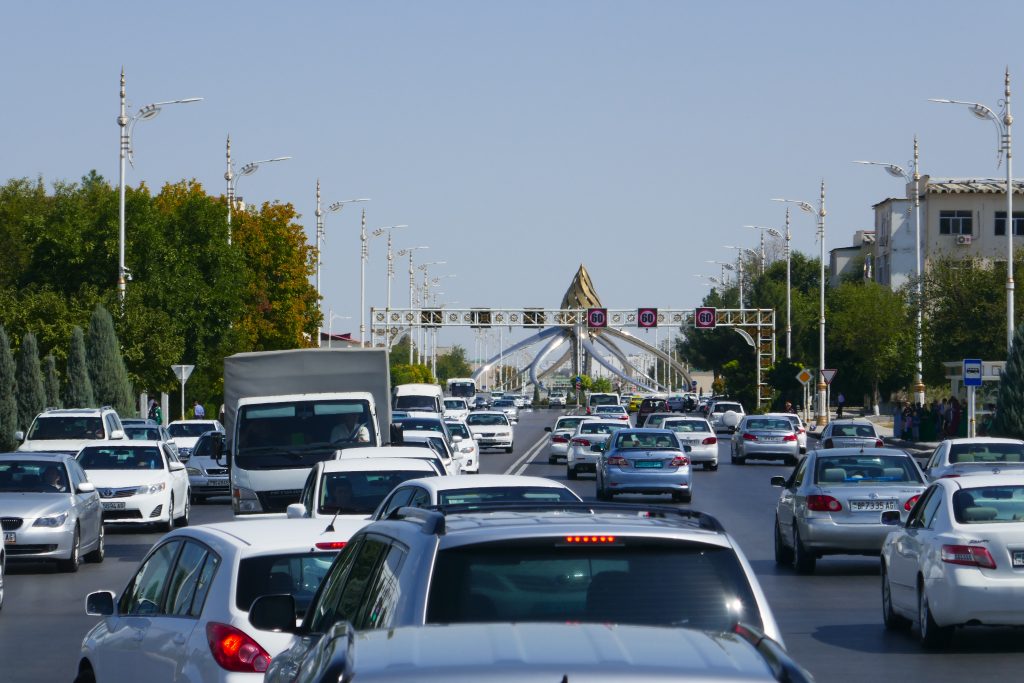
- The 8-point stars are everywhere. On streetlights, at bus stops, on buildings….well, you got it, everywhere! Apparently there are two meanings. One is a religious, the stars indicate the eight ways to paradise. The other one is more historical, the stars are symbols of Turkmen ancestors. No one actually knows the real story.
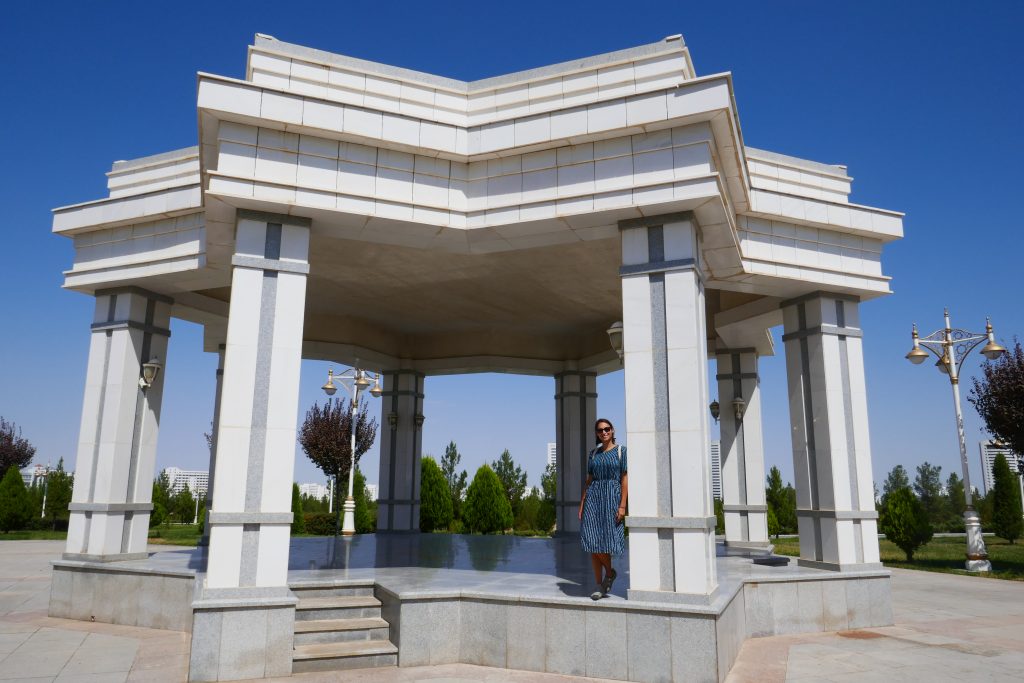
After the train station, we headed towards the city centre where we saw with our eyes the other reason why Ashgabat is such a unique place in the world. The architecture of a lot of the buildings is strictly linked with their functions. One example is the library, whose building looks like a book. We found it amazing!
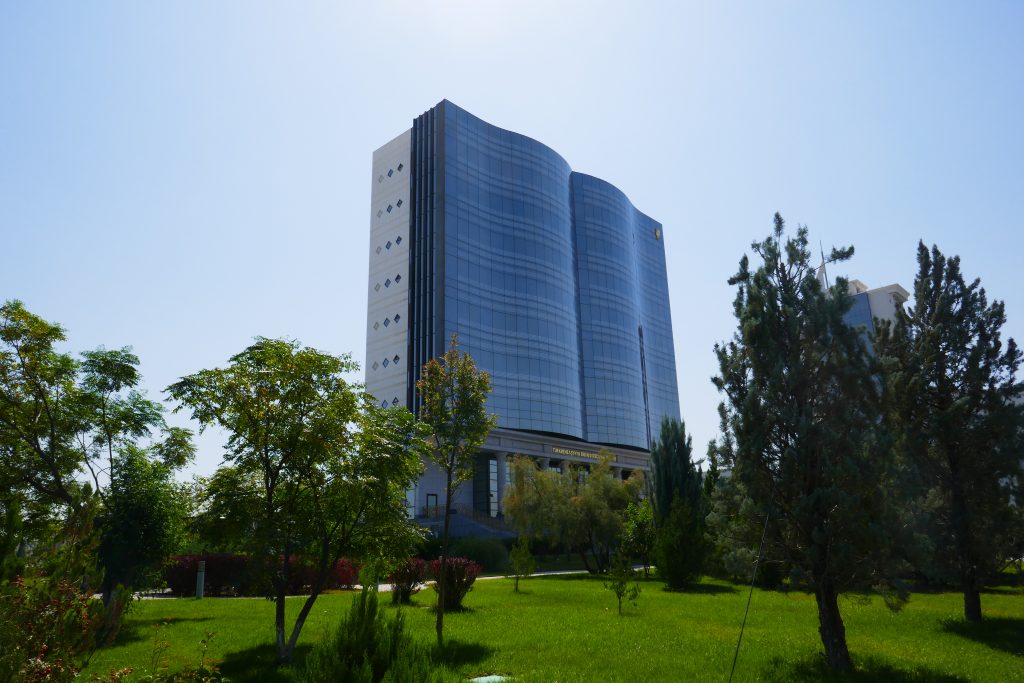
We walked a bit around the city centre and then we went for dinner; we were still knackered from the day before and we wanted to have enough energy to stay out all the following day.
The next morning we went again towards the presidential palace. The palace itself and their surroundings are amazing but unfortunately you cannot get close to them and you have to walk on the opposite side of the road, you cannot take any picture, guards are everywhere and look at you suspiciously wherever you go. Probably for this reason, locals avoid that area. The only people there were the two of us, soldiers and a lot of gardeners (maybe spies as well? After three days in Turkmenistan we started being a bit paranoid). However, that day we were lucky enough to see a military parade. It was a rehearsal for the Independence Day, on the 27th of September. That day, plenty of military divisions parade in front of the President and the Turkmenistan nation, so they practice for 4 weeks in a row right in front of the presidential palace. Our presence wasn’t happily accepted, after 5 minutes we were shouted to move on so we did without complaining.
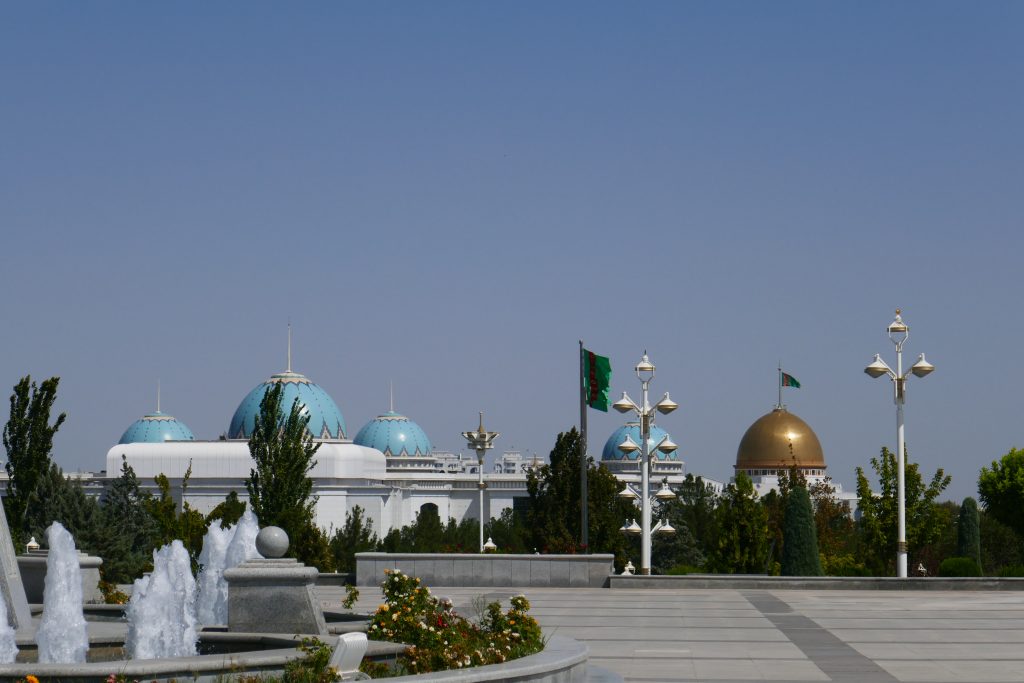
We then started walking a bit more randomly until we got to the 10 Years Independence Park where we found the golden statue of the first president of Turkmenistan, also known as Turkmenbashi (“father of Turkmens”). Funnily enough, pretty much all parks in Ashgabat are called after the anniversary of the independence so it’s quite confusing to distinguish them because they are called “independence park” “5 years independence park” “10 years independence” and so on…because of that, we managed to miss one of the sights we wanted to see, the monument of the book that Turkmenbashi wrote and that, until recently, was mandatory to study to get a public job.
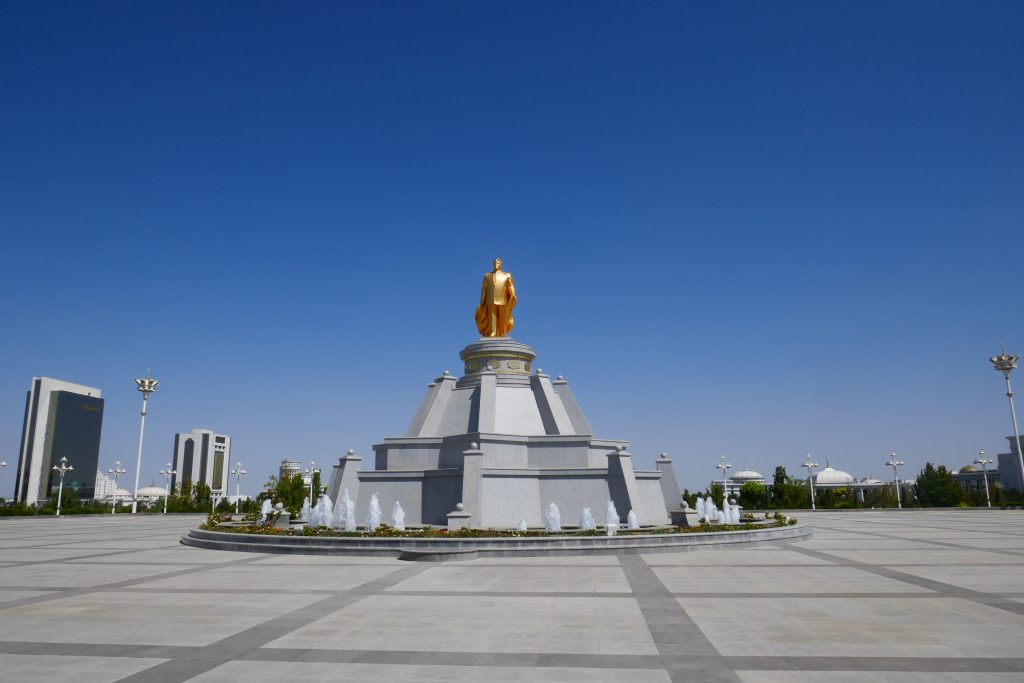
Monument of Neutrality was our third stop of the day. Massive, impressive, and quite exciting, it took quite a while to get there by bus and, on the way back, we got into a bus full of university students.
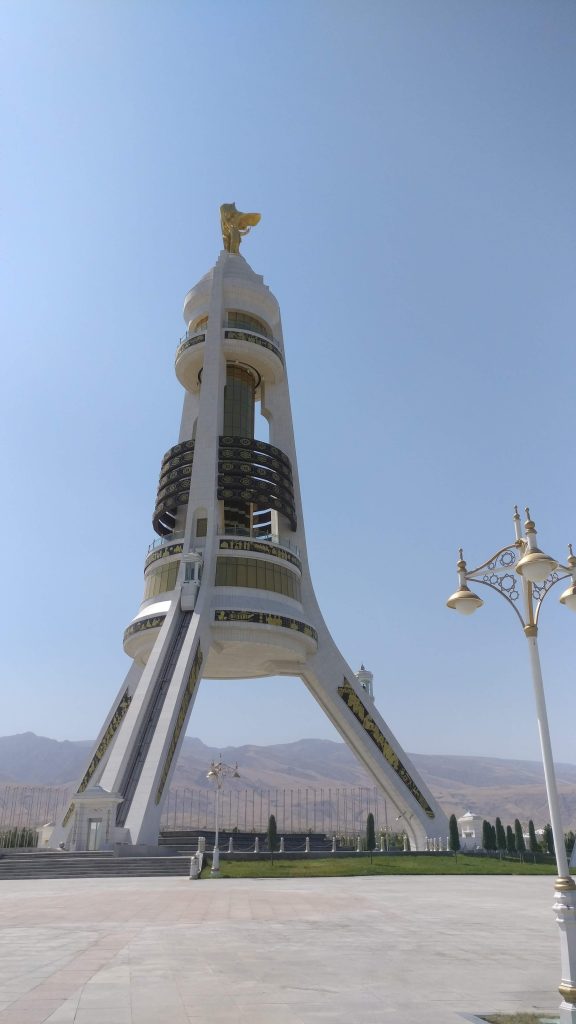
We started chatting with two of them and, using as an excuse that Giulia is a university teacher, we asked them if we could visit their university. They agreed, even though one of them didn’t seem fully convinced. We then followed them, they left us in front of the entrance of the faculty, we managed to get into the university, we asked other students if we could see their classes but, when they asked their supervisor, they replied negatively. Well, we tried it, it was better from the outside anyway. A bit disappointed we went for lunch. Here another funny episode of our Ashgabat experience. We sat at this very local restaurant next to the Russian bazaar and two people dressed in suite and tie sat next to us. We immediately thought that it was an unusual place for two people like that and, soon after, we had the strong suspect they were police officers since they looked at us very badly and followed us when we went out. This is Ashgabat! Regenerated after lunch, we decided to visit what it would have been the last sight of the city for us, Ertugrul Gazi mosque, whose peculiarity is that it looks like the blue mosque in Istanbul and it actually does!
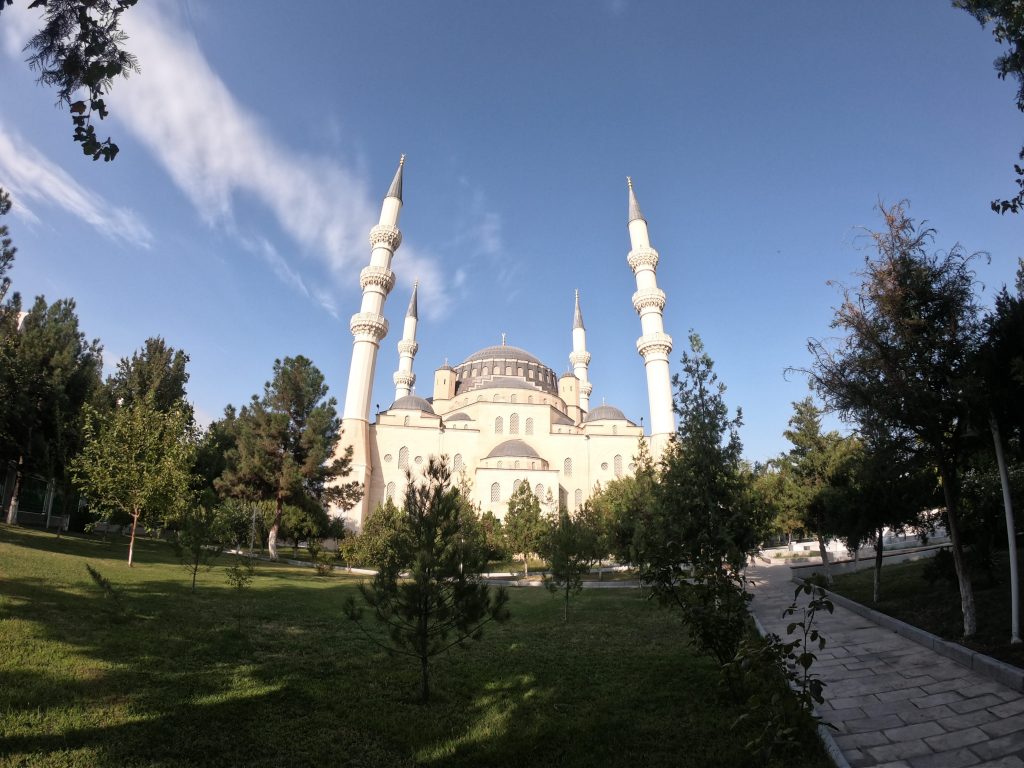
Once we finished the visit, we went home; we had a train to Turkmenabat that night. Did we like Ashgabat? Yes we did. Did we feel stressed? As solo travellers we think may be a bit stressful, police may hassle you but nothing bad happened to us. Would we go back? Why not, but not in the next future. Anyway, once in your life, you must see the white city of Ashgabat!
